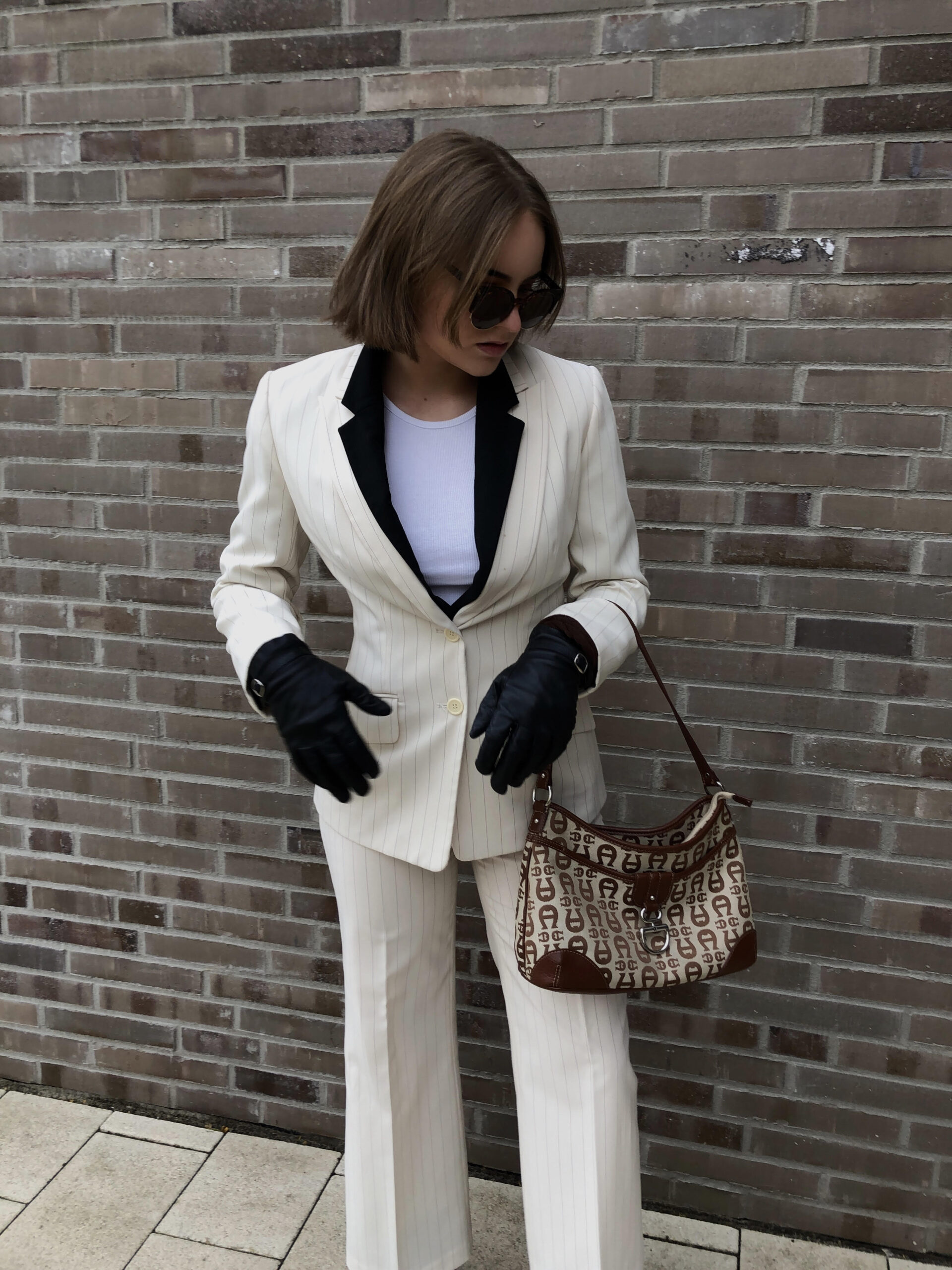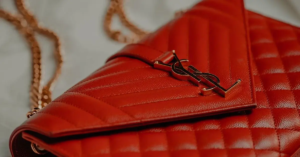When it comes to high-end fashion labels, the Fendi and Louis Vuitton matchup is a common talking point for fashion aficionados. Both labels are emblematic of elegance, world-class craftsmanship, and breath-taking designs. Nonetheless, each has its unique characteristics and brand aesthetics that distinguish one from the other.
Fendi, an Italian luxury fashion house founded in 1925, is famous for its “double F” logo and iconic “baguette” handbags while being known for its fur and leather goods. On the other hand, Louis Vuitton, a French fashion house established in 1854, is well-recognized for its monogrammed canvas bags and trunks. In this article, we dive into an in-depth comparison of these two legendary brands, examining their history, collections, and key differences to help you discern which brand would best suit your style and preferences.
What’s the Difference Between Fendi vs Louis Vuitton?
The main difference is that Fendi is an Italian luxury fashion house that is globally famous for its fur, ready-to-wear, leather goods, shoes, fragrances, and eyewear, while Louis Vuitton is a French multinational conglomerate specializing in luxury goods including leather goods, apparel, watches, and jewelry.
Fendi vs Louis Vuitton: In-Depth Comparison
History of Fendi and Louis Vuitton
Fendi, an Italian luxury fashion house, was founded in 1926 by Edoardo and Adele Fendi. Their brand initially began as a fur and leather store in Rome, and it wasn’t until the 1970s that they expanded into the fashion industry. Fendi is well-known for its high-quality fur, leather goods, and other luxury products, and it eventually caught the attention of LVMH. This international luxury conglomerate acquired a stake in Fendi in 2001.
Meanwhile, Louis Vuitton, a French luxury fashion house, traces its roots back to 1854. Founded by Louis Vuitton himself, the company initially specialized in luggage production. Louis’ son, George, played a significant role in expanding the company’s reach beyond France and ventured into the international market, starting with the first Louis Vuitton store in London.
In 1987, a merger between two leading manufacturers of champagne and cognac, Moët et Chandon and Hennessy, along with Louis Vuitton, resulted in the formation of the luxury goods conglomerate LVMH. Since then, LVMH has acquired various luxury brands, including Fendi, to strengthen its position as a global leader in the luxury goods market.
Over the years, Fendi and Louis Vuitton have continued to evolve and diversify their product offerings while maintaining their strong identities in the luxury fashion industry. Fendi’s breakthrough moment came in the 1990s with the creation of the iconic Baguette bag by Silvia Venturini Fendi, which revolutionized handbags for the fashion house and gained significant popularity among A-list celebrities. On the other hand, Louis Vuitton has expanded its product range to include not only luggage but also leather goods, ready-to-wear clothing, accessories, shoes, and more.
Today, both fashion houses stand firm as prestigious brands in the luxury market, each with a unique history and distinct styles that continually captivate loyal customers and fashion enthusiasts alike. Through their journey, Fendi and Louis Vuitton have each carved a distinct identity in the world of luxury fashion, contributing to the industry’s ever-evolving landscape.
Design Philosophy and Aesthetics
Fendi, founded in 1926 by Edoardo and Adele Fendi, began as a fur and leather store in Rome but expanded into the fashion world in the 1970s. The brand’s design philosophy centers around creativity, innovation, and craftsmanship while incorporating its fur and leather roots.
Known for its iconic double-F logo, Fendi balances tradition and contemporary aesthetics. With bold and daring designs, Fendi pushes the boundaries of fashion, often opting for unique color combinations and textures.
On the other hand, Louis Vuitton, founded in 1854 by Louis Vuitton himself, is rooted in luxury travel goods. Over the years, the brand has expanded its product offerings and has evolved into a symbol of luxury, sophistication, and elegance. The iconic monogram canvas pattern reflects the brand’s long-standing history and heritage in fashion.
The design philosophy of Louis Vuitton centers on timeless luxury, with a focus on high-quality materials and masterful craftsmanship. The brand effortlessly merges classic aesthetics with innovative and modern elements, creating a unique style synonymous with Louis Vuitton.
In summary, Fendi and Louis Vuitton embody distinctive design philosophies and aesthetics. While Fendi showcases its creativity and innovation through bold colors and daring designs, Louis Vuitton emphasizes timeless luxury and sophistication. Both brands, however, are committed to excellent craftsmanship and high-quality materials, setting them apart in the world of luxury fashion.
Price and Affordability Comparison
The price range of Fendi and Louis Vuitton handbags varies, but they typically start around $1,500 for a Fendi bag and $900 for a Louis Vuitton bag. For example, a collaboration collection between Fendi and Louis Vuitton features handbags and accessories starting at $1,500.
At the higher end of the spectrum, Louis Vuitton’s popular Neverfull bag is one of their top-selling products, offering various materials, limited editions, and unique options. On the other hand, Birkin bags can range from $9,000 to $150,000, with resale prices sometimes reaching over $223,000. Most Birkins see their value retained or increased over time, depending on leather, hardware, and market demand.
Another aspect worth considering is the price difference when buying luxury bags in various locations. For instance, purchasing a designer bag in Europe might be less expensive than in the US due to favorable exchange rates or tax differences.
Is it always about the price, though? While affordability plays a significant role in decision-making, one must also consider factors like craftsmanship, design, and exclusivity. Ultimately, the choice between Fendi and Louis Vuitton depends on individual preferences and budget.
Product Quality and Materials
Regarding product quality and materials, both Fendi and Louis Vuitton are luxury fashion brands known for their meticulous attention to detail and use of high-quality materials. Fendi, an Italian brand, is particularly revered for using leather and fur in its designs. The brand’s iconic double F logo bags and “baguette” handbags attest to their excellence in craftsmanship.
On the other hand, Louis Vuitton, a French fashion house, is synonymous with its monogrammed canvas bags and trunks. The brand’s longstanding reputation for quality is largely owed to its meticulously crafted, signature-coated canvas material. Although both brands use premium leather in various designs, Louis Vuitton’s focus on canvas materials creates a unique identity within the luxury fashion industry.
When comparing the two brands’ quality and materials, it’s essential to consider their differing approaches. Are you drawn to the elegant and minimalist designs of Fendi’s high-quality leather and fur bags? Or do you prefer the distinctive, monogrammed canvas look that has become the hallmark of Louis Vuitton’s product catalog?
- Fendi: Renowned for using top-tier leather and fur, clean lines, and minimalist designs.
- Louis Vuitton: Known for its signature monogrammed canvas materials, adding a touch of Parisian elegance to its products.
Brand Reputation and Status

In recent years, Fendi has made impressive strides in gaining prominence, especially with Chinese consumers. Fendi ranked tenth in the latest Vogue Business Index ranking, demonstrating the brand’s appeal to a global audience. Nevertheless, Louis Vuitton remains the pinnacle in the luxury world, consistently claiming the top spot in various rankings and indexes.
Does Fendi’s growing popularity mean that it is on its way to overtaking Louis Vuitton’s status? It is not easy to say definitively. However, it’s essential to consider other factors influencing a brand’s status:
- Collaborations: Fendi has had successful partnerships with several influential personalities, such as the famous luxury designer Karl Lagerfeld, while Louis Vuitton has partnered with famous designers like Virgil Abloh.
- Celebrity endorsements: Both brands have aligned with high-profile celebrities to boost their brand image. Fendi has worked with Kendall Jenner and Nicki Minaj, while Louis Vuitton has engaged Selena Gomez and Naomi Osaka.
- Signature items: Every iconic fashion brand has signature items that leave an indelible mark on the fashion industry. In this regard, Fendi is known for its “baguette” handbags and fur products, while Louis Vuitton is renowned for its classic trunks and monogrammed bags.
Celebrity Endorsements and Partnerships
Fendi and Louis Vuitton, iconic luxury fashion brands, have engaged in various celebrity partnerships to increase their visibility and appeal. These collaborations play a crucial part in shaping the brands’ image and attracting a broader range of customers.
In recent years, Fendi has worked with numerous celebrities and influencers, such as the Kardashian-Jenner clan – specifically Kim Kardashian’s collaboration with Fendi through her brand, Skims. Furthermore, the Italian fashion house teamed up with Nicki Minaj for the “Fendi Prints On” collection, reflecting the rapper’s signature style and colorful personality.
On the other hand, Louis Vuitton has an impressive roster of celebrity ambassadors, including renowned actors, singers, and athletes, contributing to the brand’s record profits and 47% organic growth during 2021. Notable examples of ambassadors include Emma Stone, Alicia Vikander, and Selena Gomez. Additionally, the brand made waves by partnering with the popular Netflix series Stranger Things, showcasing its influence in the entertainment industry.
Both brands have also ventured into the world of high fashion and furniture partnerships, further expanding their brand reach. Having shown at previous Design Miami events and Louis Vuitton, with its Objets Nomades collection since 2012, Fendi highlights their innovative collaboration efforts beyond celebrities.
It’s worth noting that some celebrity collaborations tend to make a significant impact on these luxury brands, while others might not create as much buzz. What sets these partnerships apart? Could it be the celebrity’s unique style, cultural influence, or simply the perfect timing? No matter the reason, one thing is clear: Fendi and Louis Vuitton carefully curate their partnerships to maintain their luxurious image and cater to their discerning clientele.
Sustainability and Social Responsibility

Regarding sustainability and social responsibility, both Fendi and Louis Vuitton have made strides in recent years to improve their environmental footprint and promote ethical practices. In 2020, Fendi showcased its commitment to environmental responsibility by laying the cornerstone for its Fendi Factory in Tuscany, highlighting its dedication to responsible building practices and materials sourcing. Similarly, Louis Vuitton has emphasized the importance of their committed journey toward sustainability, recognizing that long-term commitment and humility are essential elements for meaningful change.
Both brands fall under the LVMH Group umbrella, and LVMH has made significant steps in sustainability through its Life 360 initiative. Launched in May 2021, the plan focuses on key environmental aspects like carbon emissions, circularity, and ethical sourcing. The group joined the UN Fashion Charter in November, committing to its sustainability goals and targets across its luxury brands.
| Fendi | Louis Vuitton |
|---|---|
|
|
However, it is worth noting that these efforts made by both brands are still in their early stages, and there is often room for further improvement. As sustainability becomes an increasingly important aspect of the luxury industry, customers may be interested in understanding how these brands plan to reduce their environmental impact and prioritize ethical practices.
Moreover, Fendi and Louis Vuitton face unique challenges within their respective industries, and the solutions they implement may differ. How are these brands adapting to the growing demand for sustainable luxury? Are their steps truly impactful, or do they merely serve as temporary solutions? Only time will tell how their dedicated efforts will lead them further toward sustainability and social responsibility.
FAQ:
Is Fendi a high end brand?
Yes, Fendi is a high-end luxury brand known for its timeless luxury and use of only the best materials and manufacturers to create their products.
Is Fendi expensive than Louis Vuitton?
It depends on the specific product and collection being compared. Generally, both brands are known for their high prices, but the prices of their products can vary widely.
What is so special about Fendi?
Fendi is known for its timeless luxury, innovative designs, and use of only the best materials and manufacturers to create their products. The brand has a long history of creating high-quality, stylish pieces that are beloved by fashion enthusiasts around the world.
What brands are more expensive than Louis Vuitton?
There are several luxury brands that are more expensive than Louis Vuitton, including u003ca class=u0022wpil_keyword_linku0022 href=u0022https://rstyle.me/+KJwoHaj9mTsZ4CvGRMFS0Qu0022 title=u0022Chanelu0022 data-wpil-keyword-link=u0022linkedu0022u003eChanelu003c/au003e, Hermes, and Bulgari (u003ca class=u0022wpil_keyword_linku0022 href=u0022https://rstyle.me/+W_BlQFOzNxyFCcuSYir11Au0022 title=u0022BVLGARIu0022 data-wpil-keyword-link=u0022linkedu0022u003eBVLGARIu003c/au003e). The prices of these brands’ products can vary widely depending on the specific item and collection being compared.
Is Fendi worth the investment?
Whether Fendi is worth the investment depends on personal preferences and financial situation. Fendi products are known for their high quality, innovative designs, and timeless luxury but are also expensive. It’s essential to carefully consider one’s budget and priorities before purchasing.
u003cstrongu003eWhich is more expensive Fendi or Pradau003c/strongu003e?
Fendi and u003ca class=u0022wpil_keyword_linku0022 href=u0022https://rstyle.me/+eSef1TJS-m7TAMQUrM8E6Au0022 title=u0022Pradau0022 data-wpil-keyword-link=u0022linkedu0022u003ePradau003c/au003e are both high-end luxury brands, and the prices of their products can vary widely depending on the specific item and collection being compared. Generally, Fendi is considered to be slightly more expensive than Prada.
u003cstrongu003eWho is Louis Vuitton top competitoru003c/strongu003e?
Louis Vuitton has several top competitors in the luxury fashion industry, including Chanel, Hermes, u003ca class=u0022wpil_keyword_linku0022 href=u0022https://rstyle.me/+kJBCl7gg4S-Cklw7-y0Euwu0022 title=u0022Gucciu0022 data-wpil-keyword-link=u0022linkedu0022u003eGucciu003c/au003e, Burberry, and u003ca class=u0022wpil_keyword_linku0022 href=u0022https://rstyle.me/+YMw3AsGltFmccsvxdrc9zAu0022 title=u0022Cartieru0022 data-wpil-keyword-link=u0022linkedu0022u003eCartieru003c/au003e. The specific top competitor can depend on product category and regional market factors.
Who wears Fendi?
Fendi is a luxury brand that is popular with fashion enthusiasts around the world. Celebrities such as Rihanna, Kim Kardashian, and Bella Hadid have been spotted wearing Fendi products, as have fashion influencers and other style-conscious people.





